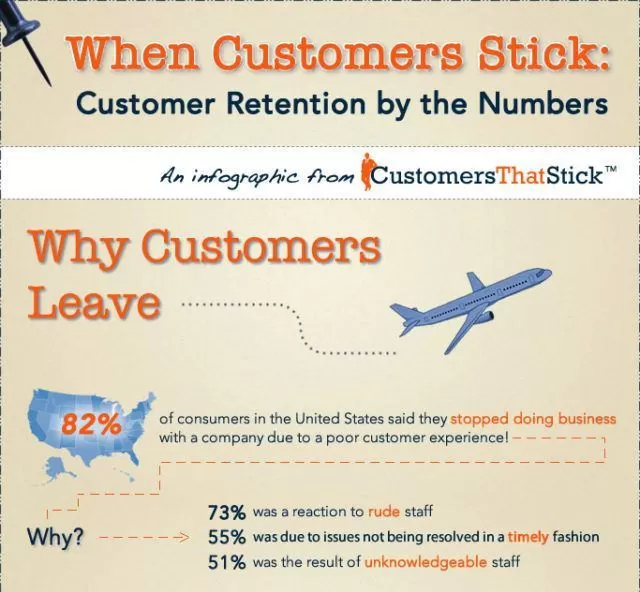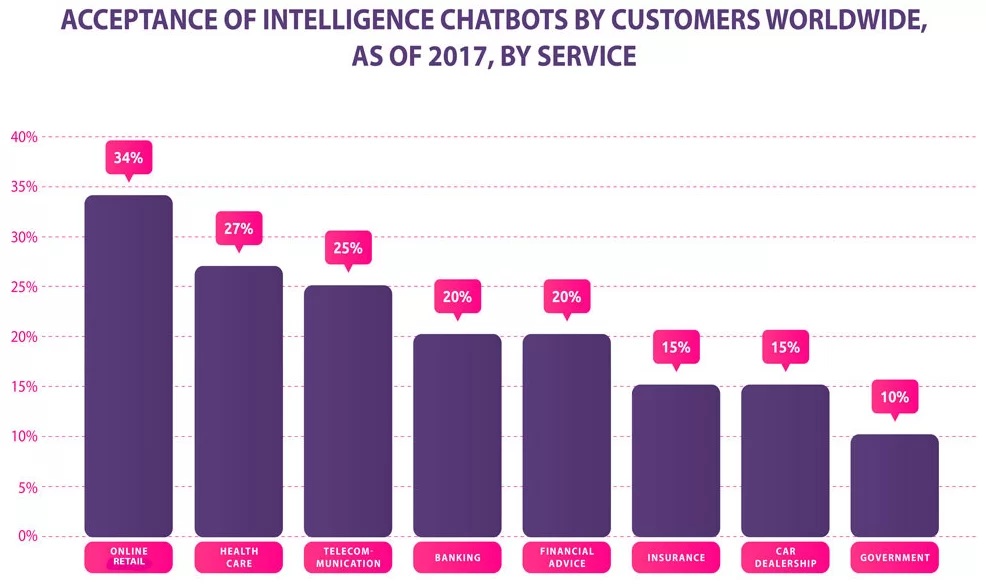Marketing technology (MarTech) is the buzzword that gets a lot of publicity recently. It is always hard to figure out whether the new trend is worth all-around attention.
Is MarTech worth the return on investment spent on its incorporation? Does MarTech really greatly facilitate the work of a marketer? Does technology simplify communication with the target audience? Is it really able to create a positive user experience?
And if the answer to most of the above questions is positive, what technologies are the most effective?
Inсreasingly, traditional marketing tools miss the mark in their attempt to increase return on investment and this is hardly breaking news. The same is about the fact that consumer communication channels have now mostly moved to digital ones. Those marketers who take full advantage of their consumers’ online surfing are dealing with MarTech – the intersection of Marketing and Technologies.
The term “MarTech” encompasses all the software and technologies that allow marketers to build communication with potential consumers in the digital space at any stage of a customer journey. MarTech is designed to simplify the control and management of this communication with your target audience, thereby helping your brand to create the most satisfactory experience for a customer.
In this article, we’ll try to find out how and what technologies can improve your marketing efforts.
What is the growing concern for marketers today?
Keeping customer loyalty now seems to be a more complicated thing for businesses than ever. According to Nielsen Global Consumer Loyalty Survey, 33% of European consumers say they love trying new brands and products, while 56% of the respondents admit that they can ‘be moved to experiment’.
Although the trend when consumers easily switch to new brands is a relatively new phenomenon among consumers, marketers need to act proactively right now.
Why is the number of brand loyalists shrinking?
The customer loyalty is declining and modern consumers switch brands faster due to their high consumer expectations, low interest in loyalty cards and opportunity to compare all the prices instantly on their smartphones.
The infographic below illustrates the most evident reasons why customers can leave the brand:

Source: www.martech.zone/infographic-customer-retention-numbers/
How MarTech can affect customer retention?
As a software development company, we believe that customer retention may be improved through the innovative technologies. Naturally, the use of great tech perks enables you to deliver tailor-made customer experience, which is highly appreciated by the person you’re trying to please.
Below, we’ve chosen the technologies that:
- improve your customer targeting;
- make a more accurate assessment of the effectiveness of your marketing campaigns;
- allow you to collect and dispose of data to make the best decisions;
- deliver rich customer experience.
Virtual reality
Gaining customers’ interest has always been #1 goal of any marketer. Virtual reality would be an advantage here. Some 75% of the Forbes top brands offer virtual experience to their customers, or are incorporating it into their business. Automotive industry brands like BMW, Audi, etc. have launched mobile apps that allow customers to get into the latest car models without paying for real cars.
Going virtual seems to become the forthcoming wave for more conventional industries like the finance and insurance sector. BNP Paribas, PNB Metlife, Citibank and other companies have already incorporated virtual reality platforms. These financial giants strive to enable clients to better connect with experts, monitor real-time service execution and claim status, increase trader efficiency while offering personalized experience. For instance, BNP Paribas has launched a VR-based application for visualizing data: it demonstrates customers a realistic picture of complex banking products, such as investment or insurance solutions, and allows clients to virtually access their account activity and transaction records.
Augmented reality
Augmented reality is a technology that allows you to add layers of digital information onto physical objects. Unlike virtual reality, augmented reality does not replace a real environment with a virtual one but replenishes it with sounds, videos and graphics. Today, augmented reality allows marketers to create campaigns and promote brands in an engaging and unique format and save costs. You can see how it works in the example of our Ariel case study.
At Elinext, we believe that augmented reality apps can be considered as your brand credibility program. Let’s see how to use AR in your marketing strategy to give your customers unique experience:
- Using the augmented reality mobile app, you can allow users to digitally sample and try wanted products prior to buying accessories and cosmetics, or using augmented reality fitting rooms. This is an opportunity to add a positive online shopping experience for the retail industry.
- Augmented reality offers virtual touring and digital walking with the ability to scan real rooms or boutiques. For example, if you represent a concert hall, you can virtually guide any visitor and let him or her find the most suitable place before buying a concert ticket. This is the right customer touch point when it comes to customers’ emotions.
- Augmented reality provides supplemented brand-related experience and information. Thus, Mercedes has already created an augmented manual for drives. While AR-enhanced branding materials brochures or business cards provide a variety of contact options with a single click.
- Augmented reality can also be part of indirect sales in your marketing strategy and let people have fun augmented reality experience that they will associate with your brand. A good example how it works is Pantene Pro-V Interactive Game
Artificial Intelligence
Artificial Intelligence (AI) is about big data analytics, machine learning and information insights into your target audience. AI can play an important role for marketers because evaluating brand interest, creating recommendation engines and raising customer awareness implies data collection and storage.
- AI-based predictive analytics. Udemy selects the appropriate training course, Spotify recommends music that you might like, Netflix offers the video you would like to watch, Facebook shows friends you might know. A marketer has to derive relevant insights, actions and decisions from customer data. If you want to predict future behaviour and purchasing patterns, you should jump on the AI bandwagon.
- Further on, AI is also associated with content generation. Based on certain parameters AI tools can generate relevant content starting from blog topics for the websites and ending with mapping out your final marketing strategies. With AI today, you can even recommend special content according to the viewer’s mood.
- The same applies to AI-enhanced digital ad development. The right targeting enables anticipating customer expectations of a purchase or service use and makes ads more effective.
- Chatbots also serve as solutions to improve communication with the target audience by helping customers with their issues and completing their tasks.
The most advanced chatbots are powered by AI to improve interaction, resolve complex queries and personalize responses:
- Chatbots facilitate insights into customer behaviors, preferences, and pain points, which enables brands and marketers to improve customer experience.
- Chatbots could play a big role in lead generation by giving the information about the product or service customers need immediately. The chatbot can direct to the correct page, starting the conversion process or even ping a sales manager to take over the conversation for more expertise level.
Chatbot technologies are expected to reach $9.4 billion by 2024 thus being a saviour for businesses in a very competitive landscape. Besides, chatbots could save the healthcare, banking, and retail sectors $11 billion annually by 2023.
 Source: www.landbot.io
Source: www.landbot.io
Internet of Things
After making a purchase, customers often break off the hook and the marketers’ job here is to prevent basically or to regain customers’ trust. IoT presents a lot of opportunities for digital marketing to raise awareness of customer psychology and needs. Just to clarify: IoT means a network of devices and machines equipped with sensors, software and other technologies in order to transfer data to other devices and machines without human interference.
IoT enables to personalize customer experience by finding out more about customers’ lifestyle, render instant services, make use of broad advertising opportunities, generate big data and analyse it, and optimize the way your company conquers the market after all.
Bottomline
As a software development company, we consider MarTech as a merging of marketers’ creativity and passion with the technical side of the issue. Combination of powerful narratives and software would offer personalized customer experience without being intrusive.
Speaking for our part and having 20 years of expertise in software development behind, Elinext is ready to encompass the most challenging areas and build customers’ loyalty in cooperation with marketers.
If you have any questions, feel free to contact us anytime, and thank you for reading.
Here’s an example of AdTech project by Elinext:
Pantene Pro-V Interactive Game – Elinext









